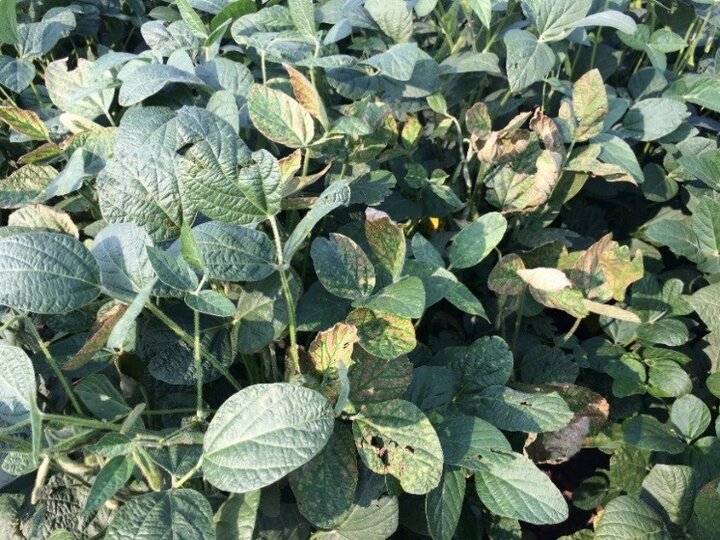The cool weather during spring 2018 delayed planting and was conducive to root and soilborne pathogens. Root diseases, including those caused by Fusarium and Rhizoctonia species were prevalent in many fields, causing damping off, stunting of seedlings, root rot, seedling blight, poor seedling vigor, and poor stand establishment. Diseases caused by Phytophthora, Pythium, Phomopsis, and Macrophomina (charcoal rot) were also prevalent.
Another important disease in 2018 was Sudden Death Syndrome (SDS) in soybean caused by Fusarium virguliforme. In addition to the eastern part of the state, SDS was found near Sutherland in west central Nebraska. This was unusual as SDS had not been seen this far west in the state previously, at least not in the last five years. This report therefore will focus on SDS. The report also will summarize a field study to evaluate management strategies for Fusarium root rot.
Sudden Death Syndrome Occurrence


The cool wet conditions in the west central region early in the growing season were favorable to disease development. High moisture levels at flowering are known to promote SDS disease development. The low areas of the field were most affected with a disease incidence level of 20%. Symptoms of SDS include scattered, yellow spots between the veins of upper leaves in the canopy. The spots may enlarge and coalesce to form large streaks or blotches between the leaf veins while the leaf veins and major lateral veins will remain green (Figure 1). At advanced stages, the leaflets will drop while the petioles remain attached to the stems. When stems are split, the color of the pith is white, a key symptom to help differentiate SDS from brown stem rot, which has a discolored pith. Additionally, infected plants will pull easily because the tap root has rotted and there is little structure to anchor the plant.
Evaluation of Management Strategies for Fusarium Root Rot in the Field
Our studies from 2015 to 2017 established that Fusarium graminearum and F. oxysporum were the two most widely distributed and virulent Fusarium across Nebraska. These two pathogens showed the highest risks of Fusarium root rot in corn, soybean, and wheat crops. In 2018, a field study was conducted to test the effect of fungicide seed treatment and the use of biological control products for the management of root rot diseases caused by these two Fusarium pathogens in a corn-soybean-wheat rotation. This study consisted of three plots (one block of plots per crop). For each crop, the experimental design was comprised of three factors:
- seeds with or without fungicide treatment,
- treatment with or without biological products, and
- inoculation with or without pathogens.
Each treatment had four replications of 10-by-20-foot research plots with 2.5-foot alleys (Figure 2). Results from these studies will be presented during the Crop Production Clinics.
Management of Root Diseases
Implement the following strategies before the root disease develop.
- Plant fungicide-treated seeds.
- Plant resistant varieties. For example, select cultivars that have partial resistance to SDS and contain a resistance gene for soybean cyst nematode (SCN). SCN weakens plants and can increase SDS levels.
- Improve soil drainage to manage soilborne diseases, especially sudden death syndrome and Phytophthora diseases.
- Rotate crops. Note that effectiveness may be reduced when pathogens are cross-pathogenic to rotation crops.
- Avoid soil compaction.
- Avoid early or late planting.
- Use biological control products in an integrated disease management system.
- Use integrated disease management that combines multiple strategies.

